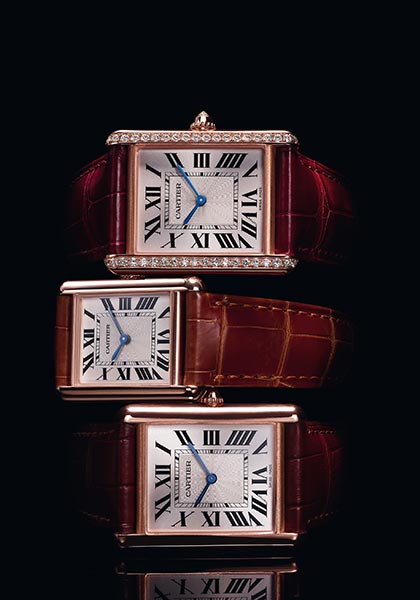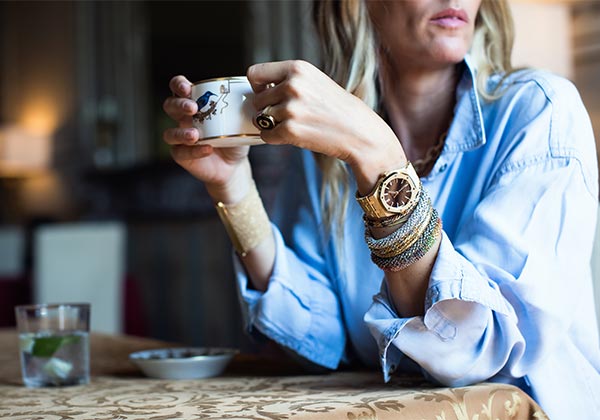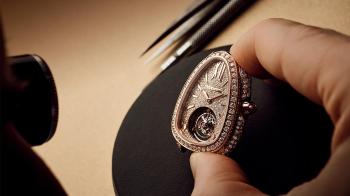Ladies take the lead
One can barely go into the evolution of ladies’ watches without touching on how women approach watches in the first place. While watch options for men are unquestionably diverse (timeonly, sports watches, chronographs, diver’s watches – you name it), women’s watches have, historically, been confined to jewellery watches and smaller, diamond-set versions of watches initially intended for men. In other words, we either had quartz watches clad in jewels or a variation of a watch from men’s collections. The diversity in women’s watches was, in reality, incredibly narrow. And in fairness, brands didn’t initially have much reason to think otherwise: women had a whole host of other accessories that their money could go towards, while men were often limited to watches and cufflinks. And yet, as previously stated, women’s purchasing power grew exponentially. While ladies’ watches definitely existed, the buying trend was, unquestionably, that women were adopting men’s watches as their own. Women were wearing generally larger diameters (this became more evident in specific European markets), and – especially in the United States, Italy and other parts of Europe – were clearly taking over the symbolic value of a man’s luxury watch (which, in many cultures, is considered a mark of success) and deciding to have it apply to themselves.

And as women adopted men’s pieces, it not only led to women’s collections but also more gender-neutral pieces at the turn of the century.

From a practical point of view, we don’t need a watch anymore, so I think what we women look for is a fashionable piece at our wrist,” explains Giorgia Mondani, CEO of Mondani Books and founder of Mondani Web, one of the premier resources for all things Rolex and an avid collector herself. “The same way we like a bracelet or ring, women love to have a beautiful watch: either elegant or sporty, with or without diamonds.” And yet, she adds: “For my personal taste, I really like to wear men’s watches, but I also love diamonds.” From Patek Philippe’s Nautilus to Rolex’s Datejust or Audemars Piguet’s Royal Oak or even Cartier’s Tank, sales reflected a growing number of women wanting to wear big statement watches.

Those numbers affected the market and, eventually, the offering. When Audemars Piguet launched the undeniably successful Royal Oak Frosted Gold in 2016 in collaboration with Italian jewellery designer Carolina Bucci, the brand’s CEO, François-Henry Bennahmias, was very transparent on how the partnership first began. Bucci had always worn a Royal Oak along with her jewellery, a large and imposing choice that Bennahmias had questioned. Bucci’s retort: none of the current women’s watches in Audemars Piguet’s collections suited her. The Royal Oak was (and still is) an established symbol of success packaged in a bold octagonal design: why wouldn’t that attract successful women? Applying her Florentine finish to the Royal Oak, Bucci and Audemars Piguet released the 36mm Frosted Gold followed by the Carolina Bucci Limited Edition in 2018 with a mirror dial instead of the traditional tapisserie dial, a beautifully bright and contemporary update to the Royal Oak, reworked by a woman with women in mind.
And as women adopted men’s pieces, it not only led to women’s collections but also more gender-neutral pieces at the turn of the century. Chanel’s J12, though initially launched as a women’s watch, evolved to become widely regarded as a unisex watch.

Zenith markets its Defy Classic as both a women’s and men’s watch. The same goes for the more classic-leaning Reverso from Jaeger-LeCoultre. Diamond-set Rolex and Audemars Piguet watches increasingly found themselves on men’s wrists, further blurring the lines of what it meant to design gender-specific watches.
As women chose watches for themselves, it allowed space for brands to explore what it means to design for women and question the traditional approach altogether.

*On the occasion of GMT Magazine and WorldTempus' 20th anniversary, we have embarked on the ambitious project of summarising the last 20 years in watchmaking in The Millennium Watch Book, a big, beautifully laid out coffee table book. This article is an extract. The Millennium Watch Book is available on www.the-watch-book.com, in French and English, with a 10% discount if you use the following code: WT2021.









